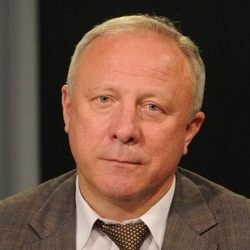Dollar and euro update highs: will we see 100 rubles for the euro?
Euro — a new high in four years
The dollar and euro exchange rates continue to update their highs in relation to the ruble for the second week in a row. If last week the euro broke through the mark of 90, and then 91 rubles, today the rate is fixed at 93 rubles. This rate has been set for the first time since January 2016. As of 12:30 Moscow time, the euro exchange rate on the Moscow exchange was is 93,15 rubles.
The dollar is also growing in a similar way: on 29 September, the US currency exchange rate was 79,67 rubles as of 12:30 Moscow time. However, according to analysts, the dollar is slightly weaker against the euro.
In parallel with these events, oil prices began to decline. As of 11:00 a.m., the price of November Brent crude futures on London ICE Futures Exchange by 11:20 a.m. on Tuesday is $42,25 per barrel, which is by $0,18 (0,42%) lower than the closing price of the previous session. Later, by 12:30, the price fell to $42,15, and prices were fixed to $42,04 per barrel during the day.
“There are things that frighten non-residents”
Andrey Vernikov, the head of the investment analysis and training department at Univer investment group, calls the main reason for the unstable political situation around Russia, which is periodically heated by fresh news.
“The first point is that other currencies of developing countries (for example, the Turkish lira) are not being in very good condition right now. The second point is purely political. Either Belarus or Navalny are clearly things that frighten non-residents, and they do not buy OFZs well — they rather sell and withdraw everything in dollars.

While it is difficult to determine how long the fall of the ruble will last, continues Vernikov. However, there is an event that should significantly affect the ruble exchange rate and which should be followed today — the debate of US presidential candidates Joe Biden and Donald Trump.
“If Biden wins, it means new sanctions on Russia. The fate of financial markets in developing countries is not in our hands right now," Vernikov adds.
Yury Yudenkov, Professor of the Department of Finance, Money Circulation and Credit at the Ranepa, gives other reasons.
“Today, the Central Bank has reduced its trading volumes on the stock exchange. Second, speculators have become more active in the face of uncertainty due to the pandemic. This phrase — “the dollar and the euro tend to grow, it tells people that if they buy the currency now, it will cost more in a year. Naturally, this encourages speculators. And citizens are motivated to keep savings in foreign currency. The price for oil also plays a role — all together it gives the boom in the foreign exchange market. People don't believe in the ruble.
At the same time, it became known that in the period from October 1 to December 30, the Central Bank of 2020 will sell 184 billion (2,9 billion a day) of currency on the domestic currency market. This may benefit the ruble exchange rate, Yudenkov says, but only for a while.
